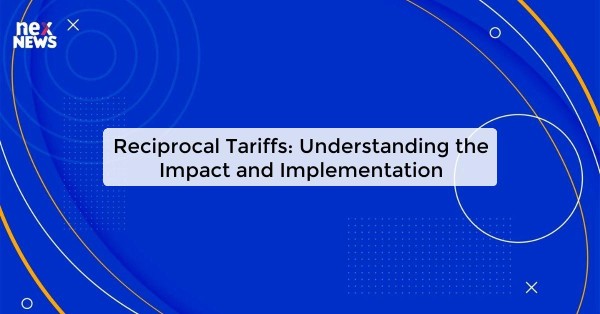How Reciprocal Tariffs Work
Reciprocal tariffs are a form of trade strategy used by countries to respond to trade barriers or tariffs imposed by another country. Essentially, when one country raises tariffs on imports from another country, the targeted country may choose to retaliate by imposing similar tariffs on goods originating from the first country. This tit-for-tat approach aims to protect domestic industries and jobs, while also leveraging economic pressure to negotiate more favorable trade terms.
The implementation of reciprocal tariffs can lead to a cycle of tariff escalation between nations, potentially resulting in trade tensions and affecting global commerce. As countries engage in this trade tactic, there is a risk of a trade war, where each country continues to increase tariffs in response to the other's actions. While reciprocal tariffs can be seen as a means to address unfair trade practices or seek concessions, they also have the potential to disrupt supply chains, increase prices for consumers, and hinder overall economic growth.
Historical Context of Tariffs
Tariffs have a long history dating back to ancient civilizations when rulers imposed taxes on imported goods to protect domestic industries and raise revenue. In the 19th century, tariffs played a crucial role in the industrialization of many countries, providing a shield for newly emerging industries from foreign competition. The protectionist policies adopted by nations during this period led to the formation of economic blocs and alliances based on mutual trade interests, shaping the global economic landscape.
The Great Depression of the 1930s saw a surge in protectionist measures as countries sought to shield their economies from the impact of the global economic downturn. The Smoot-Hawley Tariff Act of 1930, which raised tariffs on over 20,000 imported goods, exacerbated the economic crisis by triggering retaliatory actions from trading partners. This period highlighted the interconnectedness of global trade and the far-reaching consequences of unilateral tariff policies on international relations and economic stability.
Key Players in Implementing Tariffs
The implementation of tariffs is a complex process that involves various key players. Government officials, particularly those in the Department of Commerce and the Office of the United States Trade Representative, play a crucial role in proposing and developing tariff policies. These individuals are responsible for assessing the economic impact of tariffs, determining which industries to target, and collaborating with other government agencies to enforce and monitor tariff regulations.
In addition to government officials, industry stakeholders also play a significant role in influencing tariff decisions. Trade associations, lobbying groups, and individual companies actively engage in the tariff-setting process by advocating for the interests of their respective industries. These stakeholders provide valuable insights into the potential consequences of tariffs on businesses, workers, and consumers, ultimately shaping the implementation and enforcement strategies of tariff policies.
Industries Affected by Tariffs
Tariffs have a significant impact on various industries across the global market. When tariffs are imposed on imported goods, industries that rely heavily on international trade can face challenges in remaining competitive in the market. The increased cost of imported raw materials or final products can lead to higher production expenses for these industries, potentially affecting their profit margins and overall sustainability.
Moreover, industries that heavily rely on exports may also feel the repercussions of tariffs imposed by other countries. When key trade partners implement reciprocal tariffs in response to protectionist measures, it can hinder the export activities of industries that rely on international demand for their products. This can lead to reduced market access and revenue for these industries, impacting their growth and development in the global arena.
Global Trade Relations and Tariffs
In the international arena, tariffs play a significant role in shaping global trade dynamics. Countries often use tariffs as a tool to regulate imports and exports, protect domestic industries, and negotiate trade agreements with other nations. The imposition of tariffs can lead to both positive and negative repercussions, impacting not only the economies of the countries involved but also influencing their diplomatic relationships.
Trade tensions arising from tariff disputes can strain bilateral and multilateral trade relationships, creating barriers to economic cooperation and hindering the growth of global commerce. When countries engage in tit-for-tat tariff measures, it can escalate into a trade war, resulting in higher costs for consumers, disrupted supply chains, and overall instability in the world economy. The intricate interplay between global trade relations and tariffs requires careful navigation and strategic decision-making to achieve a balance between protecting national interests and fostering mutually beneficial trade partnerships.
